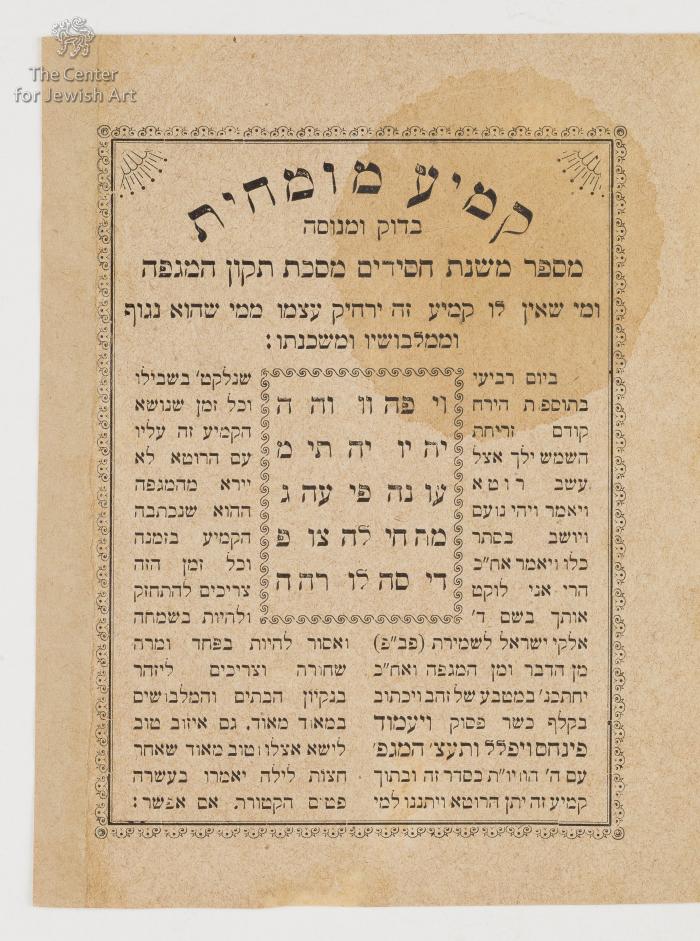Obj. ID: 54083 Amulet by Moshe Teitelbaum, Hungary, circa 1920

sub-set tree:
The following description was prepared by William Gross:
Rabbi Moshe Teitelbaum (1759 - 16 July 1841) (Hebrew: משה טייטלבוים), also known as the Yismach Moshe, was the Rebbe of Ujhely in Hungary. According to Löw, he signed his name "Tamar", this being the equivalent of Teitelbaum, which is the Yiddish for "palm-tree" (compare German "Dattelbaum"). An adherent of the Polish Hasidic Rebbe, the Chozeh of Lublin, Rabbi Teitelbaum was instrumental in bringing Hasidic Judaism to Hungary. Though initially opposed to Hassidism, after his son-in-law introduced him to the Chozeh of Lublin, he soon became an adherent to Hassidism.
Teitelbaum first served as a rabbi in Przemyśl, and later in Sátoralja-Ujhely, where he was called in 1808. In Ujhely he founded a Hassidic congregation which was independent of the Galician leaders. In 1822 Teitelbaum was suspected of having supplied amulets to certain Jewish culprits who had been cast into prison for libel, in order to assist them in escaping. When called upon to vindicate himself he declared that the amulets in question served only as substitutes for the mezuzah and that their only purpose was to protect their bearers against demons. Teitelbaum enjoyed an enviable reputation, with even Rabbi Moses Sofer paying him homage.
The amulets of Moshe Teitelbaum, from the court of Satmar Hassidim, were most often against plague. They were published in many different forms, as witness the number of examples in the Gross family collection. This amulet is printed with a second amulet against the plague specifically from Teitelbaum, but It is not stated that the this first one is according to Moshe Teitelbaum. However, it is printed with another one that is according to his teaching, it is likely to be a Teitelbaum amulet as well.




